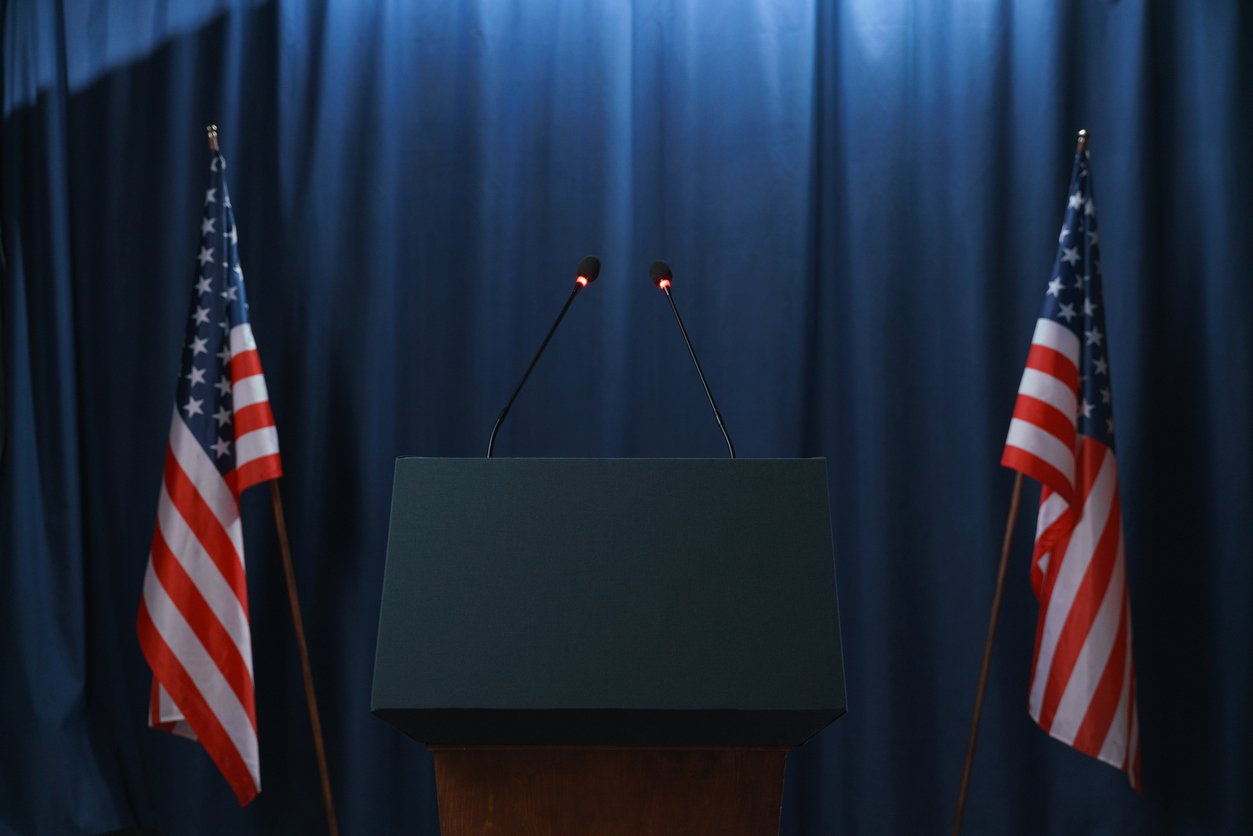The Scoop: Vance’s ‘slick’ performance helps Republicans claim debate win
Also: CNN launches digital paywall; U.S. port workers strike.

With only five weeks to go until Election Day, Democrat Tim Walz and Republican JD Vance stuck to their talking points during Tuesday night’s vice-presidential debate.
The head-to-head debate in New York was a policy-focused discussion, with the candidates sparring on issues like immigration, the economy, gun rights and abortion. When asked about the growing turmoil in the Middle East, Walz promised “steady leadership” with Kamala Harris as his running mate. In response, Vance vowed to bring “peace through strength” if voters chose Donald Trump.
The most noticeable difference between the two was how comfortable they were on stage.
CNN contributor Van Jones summed up the debate as the “kitchen table versus the Ivy League.”
Most accounts gave kudos to Ohio U.S. Senator Vance for his poise and command of policy. USA Today noted he appeared to do what his running mate, Donald Trump, was unable to do in his debate three weeks ago with Kamala Harris: avoid “verbal missteps” and “outrageous outbursts.”
By comparison, Walz, the governor of Minnesota, appeared nervous at times.
“I thought the biggest mismatch was on the first question where Walz appeared a bit confused and almost like a deer in headlights,” Dr. Ben Voth, director of debate at Southern Methodist University, told Newsweek. “He seemed to miss or be unwilling to specifically answer whether Israel should be allowed to do a preemptive strike.”
Why it matters: Sometimes it’s as much about how a message is being delivered as it is who’s delivering. Confidence and presentation matter.
On Tuesday night, we saw a tale of two very different presenters. As Jones said, Vance brought the “Slick. Slick. Slick.” debate approach he developed at Yale Law School to the stage in New York on Tuesday.
By comparison, Walz had reportedly voiced nervousness about his appearing in the debate, noting that he expressed concerns to Harris in August that he’s a “bad debater” and might let her down. It’s important to note that some viewed the tactic as a way to manage expectations about his performance.
These fears seemed to come true at times during, especially early on. Jen Psaki, a former press secretary for President Joe Biden, felt that Walz’s performance lacked “the magic and the organic spontaneity” he usually offers.
By comparison, Vance aimed to provide a more tempered version of the brash, name-calling version of Trump the world saw in his debate with Harris three weeks ago. CNN described Vance’s debate performance as providing a “younger face and more polite voice” to the Republican ticket.
“Unlike Trump, he pronounced Harris’ first name correctly. He referred to his opponent by his title. He didn’t often whine about the moderators – though Trump did so during the debate on his Truth Social platform. The Ohio senator also largely passed on opportunities to litigate the details of Walz’s own biography.”
Of course, as with any debate, both candidates had their moments – both good and bad. For all his positives, Vance drew criticism for dodging questions from Walz about false narratives by Trump by the 2020 election and the January 6 insurrection.
“Did he lose the 2020 election?” Walz asked Vance.
“Tim, I’m focused on the future,” Vance began his response before Walz responded by calling it a “damning nonanswer.”
But that early lack of confidence and timid approach ultimately hurt Walz in the eyes of some prospective voters.
Ahead of Tuesday, a poll of CNN viewers revealed that 54% believed Walz would outperform Vance. Following the debate, however, 51% of the same prospective voters said that Vance did the better job, with 49% picking Walz.
It’s not clear how much sway a vice presidential debate can have on an election. As of Wednesday morning, the New York Times had the Harris-Walz ticket ahead by 3 points, slightly outpacing its polling on Sept. 17.
Both tickets have to keep it up
Election Day is Tuesday, Nov. 5.
Editor’s Top Reads
- CNN is introducing a paywall for high-volume readers in the United States. The news organization noted that the “average visitor” to CNN.com, who may only read a few articles a month, won’t have to pay at this time. After users consume an unspecified number of free articles, however, they’ll be prompted to subscribe for $3.99 a month. The introduction of paywalls certainly isn’t new to the news industry, but they can have an effect on the value of earned media. Alex MacCallum, CNN’s executive vice president of digital products and services, noted that the paywall will help foot the bill for CNN’s journalism around the world. But it can also restrict the reach of certain types of content, meaning PR pros may need to adjust their media approach to account for the restricted reach. MacCallum explained that CNN plans to provide certain subscriber exclusives, such as curated daily selection and fewer digital ads, which may also create new opportunities for collaboration between the media relations and paid media teams.
- The International Longshoremen’s Association went on strike Tuesday, shutting down cargo ports from Maine to Texas. The strike will block a range of movement of imports and exports, from bananas to alcohol to household items. The dockworkers’ strike, their first since 1977, could have a major impact on supply chains and cause higher prices if it stretches on for more than a few weeks, according to the Associated Press. Many companies will likely end up getting drawn into the situation through no fault of their own – but it will be their responsibility to manage. As a result, businesses should be proactive and deploy a messaging strategy that anticipates potential delays in product delivery or shortages, especially as we near the busy holiday shopping period. Messaging should clearly and transparently communicate the situation to their customers without taking sides or getting drawn further into the issue. The message should be understanding and sympathetic considering shipping delays or cost hikes can have a real impact on consumers.
- Reporter Taylor Lorenz is leaving The Washington Post after the newspaper’s internal review of a social media post she made about President Joe Biden, which involved her calling Joe Biden a “war criminal.” She said she was referencing a meme. Lorenz, a well-regarded technology reporter, plans to launch a newsletter on Substack and pursue the type of reporting that has become “increasingly difficult to do in corporate media,” she wrote. The move highlights the ever-changing news landscape and the continued emergence of nontraditional media platforms. Today’s media environment makes distinctions such as journalist, content creator and influencer “meaningless,” Lorenz said. “We are all part of the same media ecosystem; we can all have a voice online.” This change is a reminder that legacy and traditional news outlets should remain a key part of your media strategy, but there are many nontraditional platforms, with large audiences and reputable backings, available for consideration as well.
Casey Weldon is a reporter for PR Daily. Follow him on LinkedIn.







